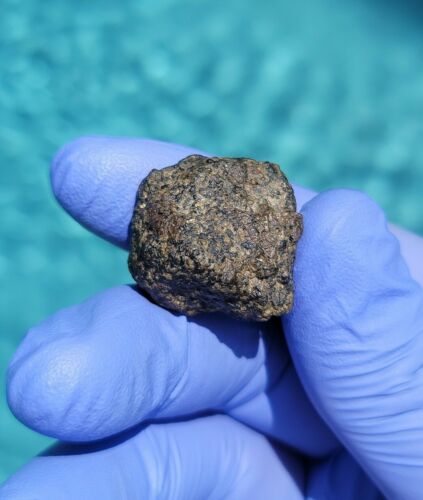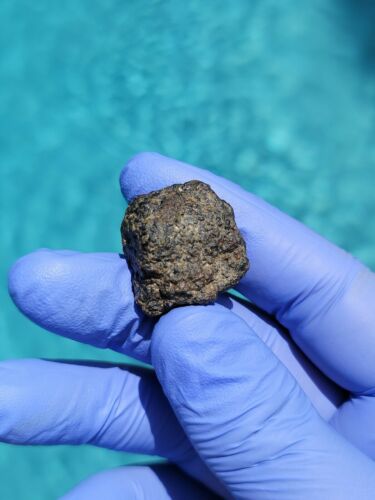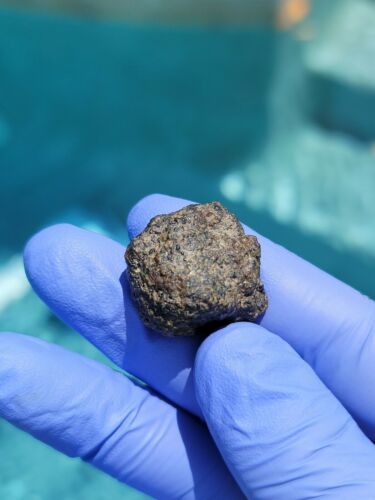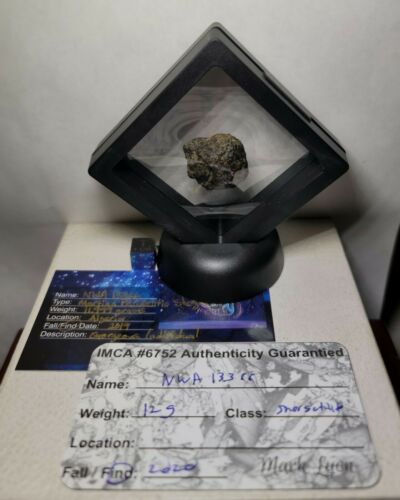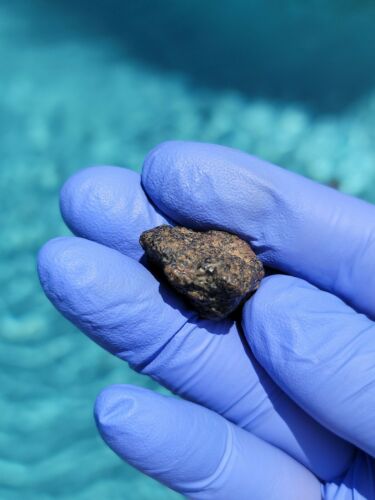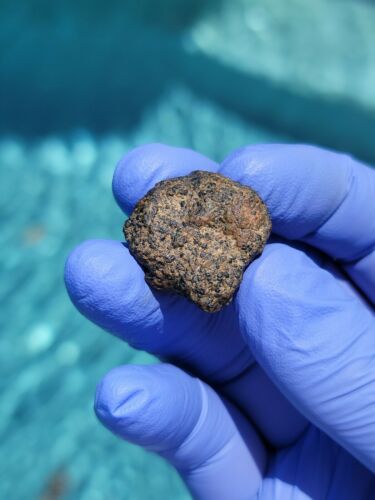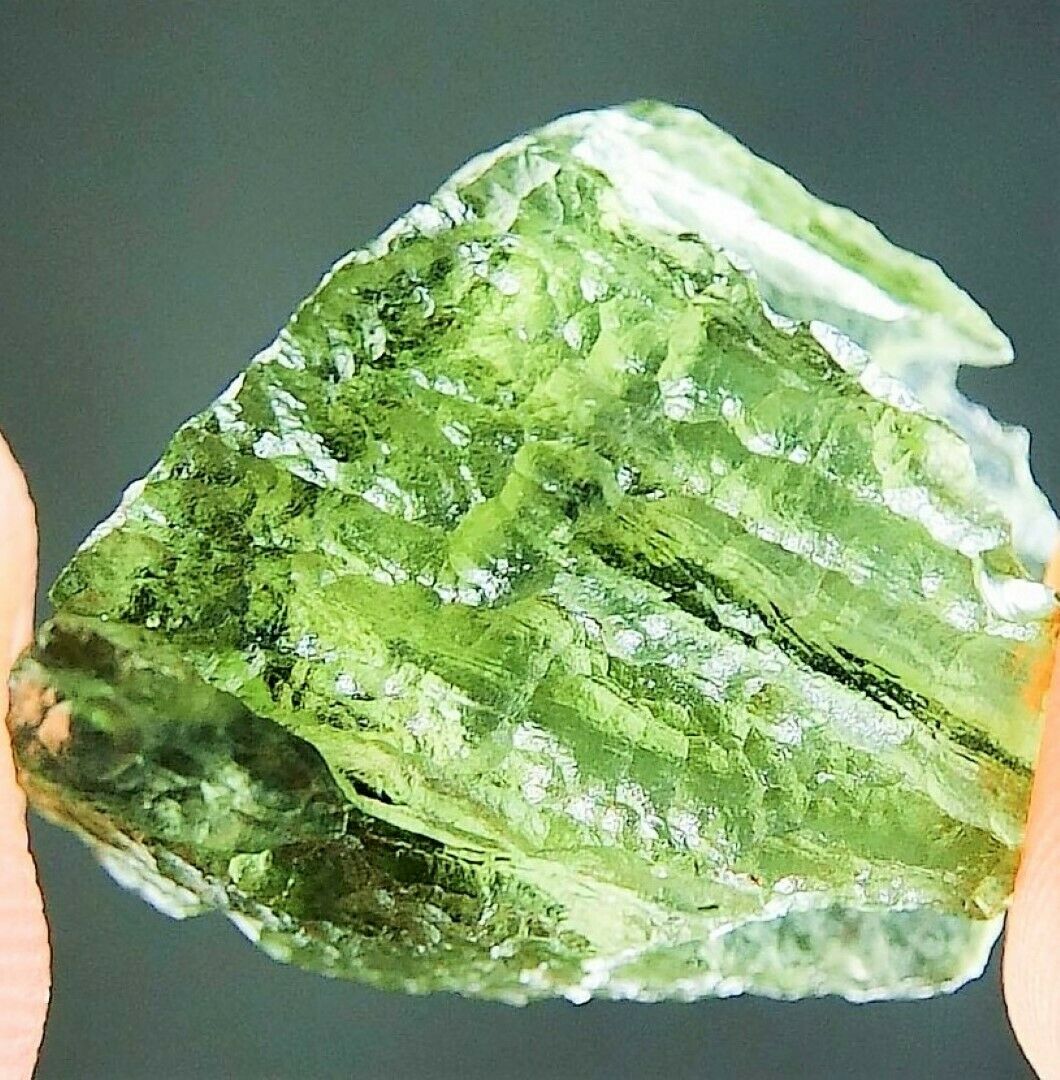-40%
Meteorite**NWA 13366, Martian Peridotitic Shergottite**11.999 Gram, Individual!!
$ 1003.19
- Description
- Size Guide
Description
Hello up for auction is NWA 13366 classified as a rare MARTIAN PERIDOTITIC SHERGOTTITE. This gorgeous individual weighs 11.999 Gram, it has fusion crust and a beautiful fine polish to one side, very odd looking material. This is a very fresh MARTIAN, highly shocked ultramafic cumulate rock with ophitic to poikilitic textures with mm-size pale yellow and dark gray grains similar to samples found in Antarctica.The lherzolitic shergottites probably crystallized as cumulates from residual melts in magma chambers, and they share many mineralogical and chemical features with the basaltic shergottites. The lherzolitic members are five finds from the ice fields of Antarctica - ALH 77005,***
VERY LIMITED SUPPLY
***
I recently obtained about 45 grams of this material recently from my friend Dr. Shun-chung Yang, he purchased them from Mark Lyon, and Mark obtained them from Dustin Dickens the original classifyer. This is officially classified as NWA 13366 and is a rare and one of the most beautiful Martians on the market, this material is very hard to find right now. Thanks for your interest and take care, comes with my COA card, Mark Lyon's COA card, and display case.
IMCA says:
How did Martian meteorites get here?
Gravitational interactions among all bodies orbiting the Sun cause perturbations that result in collisions between some of them. Early in solar system history such collisions almost certainly were much more frequent and involved much larger masses, so it is not difficult to imagine that some fairly large bodies were destroyed and dispersed in such events. Today, the interactions that ultimately deliver meteorites to us are less energetic, yet still can cause small pieces of a large body struck by a smaller object to be ejected at a rate that exceeds the escape velocity needed to overcome the gravitational force of the larger body. For Mars (with a gravitational acceleration about 0.38 that of Earth) this requires a fairly energetic collision by a small asteroid onto the Martian surface. The material so excavated could consist of rocks outcropping at the surface and/or subsurface samples from a certain depth. In the early 1980s scientists were skeptical that specimens that we now know to come from Mars actually could be accelerated enough to escape Mars gravity. Once the Martian origin of some specimens became undeniable (see below), theorists were forced to reconsider the physics of this process, and discovered that it was indeed possible to eject material by a mechanism called
spallation. The fact that all Martian meteorites show evidence of moderate to high shock pressures is very consistent with these conclusions.
How do we know they are pieces from Mars?
The detective work that eventually connected a small group of strange achondritic meteorites to a fairly well known planet is a remarkable philosophical achievement. Actually, solving this case depended on a relatively unheralded measurement by the two NASA Viking spacecraft that landed on Mars in 1976. Although sent to conduct experiments to detect extant life in Martian soil (which they did not), the Viking landers gained redemption of sorts because the instruments measured the amounts of different gases in the thin Martian atmosphere. Those same gases were first found in 1983 by Donald Bogard and Pratt Johnson in very small amounts (but in the exact
same proportions) trapped within shock glass veins and pockets in shergottite Elephant Moraine 79001, and now in at least five other Martian meteorites (see plot).
Name:
Northwest Africa 13366
This is an OFFICIAL meteorite name.
Abbreviation:
NWA 13366
Observed fall:
No
Year found:
2019
Country:
Algeria
Mass:
417 g
Classification
history:
Recommended:
Martian (shergottite)
This is 1 of 245 approved meteorites (plus 1 unapproved name) classified as Martian (shergottite).
Comments:Approved 2 Aug 2020
Northwest Africa 13366
(NWA 13366)
Algeria
Purchased: 2019
Classification: Martian meteorite (Shergottite)
History
: Purchased from a nomad in Algeria in 2019 and sent to Dustin Dickens at the Tucson Gem and Mineral Show, February 2020.
Physical characteristics
: Single stone, saw cut reveals an ultramafic cumulate rock with ophitic to poikilitic textures with mm-size pale yellow and dark gray grains.
Petrography
: (C. Agee, UNM) Microprobe examination shows approximately 60% olivine, 35% pyroxene, and 5% maskelynite. Two distinct pyroxene trends are present 1) Mg-rich low calcium pyroxene trending to slightly more Fe-rich pigeonite, 2) Mg-rich augite trending to more Ca-rich augite. Ilmenite, Fe-sulfide, and merrillite are minor ubiquitous phases.
Geochemistry
: (C. Agee, UNM)
Classification
: Martian peridotitic shergottite. Macroscopic textural appearance similar
Specimens
: 20 g on deposit at UNM, Dustin Dickens holds the main mass.
:
Place of purchase:
Algeria
Date:
P 2019
Mass (g):
417
Pieces:
1
Class:
Martian (shergottite)
Shock stage:
high
Weathering grade:
low
Fayalite (mol%):
34.5±2.6
Ferrosilite (mol%):
24.4±4.6, 16.0±1.2
Wollastonite (mol%):
5.9±3.8, 35.0±3.1
Classifier:
C. Agee, UNM
Type spec mass (g):
20
Type spec location:
UNM
Main mass:
Dustin Dickens
Comments:
Field name DD-65; submitted by C. Agee, UNM
